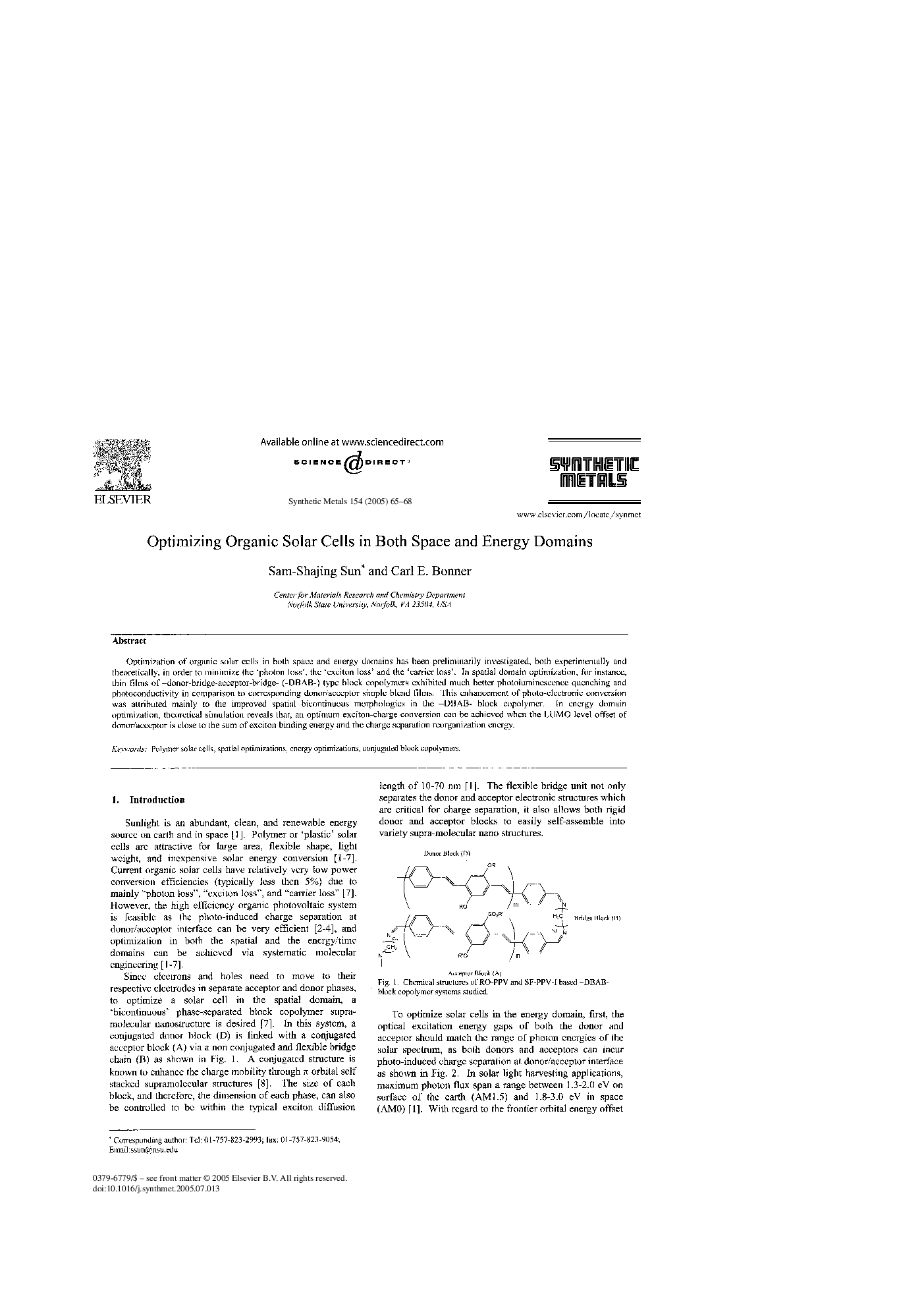| Article ID | Journal | Published Year | Pages | File Type |
|---|---|---|---|---|
| 9776215 | Synthetic Metals | 2005 | 4 Pages |
Abstract
Optimization of organic solar cells in both space and energy domains has been preliminarily investigated, both experimentally and theoretically, in order to minimize the 'photon loss', the 'exciton loss' and the 'carrier loss'. In spatial domain optimization, for instance, thin films of -donor-bridge-acceptor-bridge- (-DBAB-) type block copolymers exhibited much better photoluminescence quenching and photoconductivity in comparison to corresponding donor/acceptor simple blend films. This enhancement of photo-electronic conversion was attributed mainly to the improved spatial bicontinuous morphologies in the -DBAB- block copolymer. In energy domain optimization, theoretical simulation reveals that, an optimum exciton-charge conversion can be achieved when the LUMO level offset of donor/acceptor is close to the sum of exciton binding energy and the charge separation reorganization energy.
Keywords
Related Topics
Physical Sciences and Engineering
Materials Science
Biomaterials
Authors
Sam-Shajing Sun, Carl E. Bonner,
